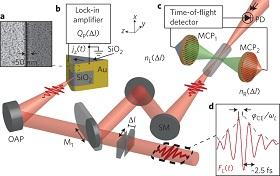The state of smart cities in MENA
11 December 2025
Published online 12 February 2014

Since femtosecond spectroscopy was first used to probe the dynamics of extremely fast chemical reactions , a technique which won Ahmed Zewail the Nobel Prize for Chemistry in 1999, it has broken through the attosecond barrier – 1 million million millionth of a second1.
Researchers use short laser pulses a few femtoseconds long to track the movement of electrons. These femtoseconds long pulses contain only a few oscillation cycles of their electric field. The timing of these oscillations, relative to the pulse peak, is controlled by a parameter called the Carrier-Envelope Phase (CEP), the precise measurement of which is important for the reproducible generation of attosecond pulses.
Until now, the detection of CEP has only been possible using complex and bulky setups in a vacuum. But a team of researchers, including Ali Alnaser of the American University of Sharjah, United Arab Emirates, have designed a new technique that allows the detection of CEP under normal conditions, publishing their method in Nature Photonics2.
They used amorphous silicon dioxide as an insulating dielectric placed between two gold electrodes. The electric field of the laser pulse increases the conductivity of silicon dioxide, inducing a current in the gold electrodes. Since this effect is directly dependent on the electric field component of the laser pulse, it can thus be used for direct CEP detection.
doi:10.1038/nmiddleeast.2014.45
Stay connected: